Released in early 2018, the HomePod is Apple’s answer to the wave of popularity generated by the Amazon Echo four years earlier. True to its tradition, Apple’s long-expected speaker enjoys a classy yet minimalist design, available in “space gray” or white. Although it connects to a Wi-Fi network, it is exclusively compatible with iOS devices (full list here). In addition to recently announcing the release of the HomePod mini, Apple also said that the HomePod would open itself to streaming services other than Apple Music, such as Spotify, YouTube Music, and Deezer.
After six year in the making, Apple says its flagship speaker is entirely focused on sound quality, promising “high-fidelity audio that’s all around you,” as well as “deep bass with range you can feel.” The home-designed A8 chip orchestrates the signal processing, which includes beamforming (which is the same as audio zoom, but for speakers instead of microphones), dynamic processing, and minimizing bass distortion. With a diameter of 14 cm, a height of 17 cm, and 2.5 kg on the scales, the cylindrical speaker carries no less than seven horn-loaded tweeters, each with its own custom amplifier, and a high-excursion woofer. Finally, thanks to an integrated accelerometer, the device automatically detects when it is being repositioned, and systematically launches a low-frequency calibration for bass correction.
We put the HomePod through our rigorous DXOMARK Speaker test suite to measure its audio playback performance. In this review, we will break down how it fared in a variety of tests and several common use cases.
Key specifications include:
- Eight speakers: seven horn-loaded tweeters, one high-excursion woofer
- No connectors (no 3.5mm jack, nor optical input), no Bluetooth connection
- Dimensions: 14 cm diameter, 17 cm height
- No IP rating
- No battery
- Compatible OS: iOS
Test conditions:
- Tested with iPhone SE iOS 13.5
- Communication protocol used: AirPlay 2
- Firmware version: 13.4.8
About DXOMARK Wireless Speaker tests: For scoring and analysis in our wireless speaker reviews, DXOMARK engineers perform a variety of objective tests and undertake more than 20 hours of perceptual evaluation under controlled lab conditions. This article highlights the most important results of our testing. Note that we evaluate playback using only the device’s built-in hardware. (For more details about our Speaker protocol, click here.)The Apple HomePod falls into the Advanced category of devices in the DXOMARK Speaker rankings.
Test summary
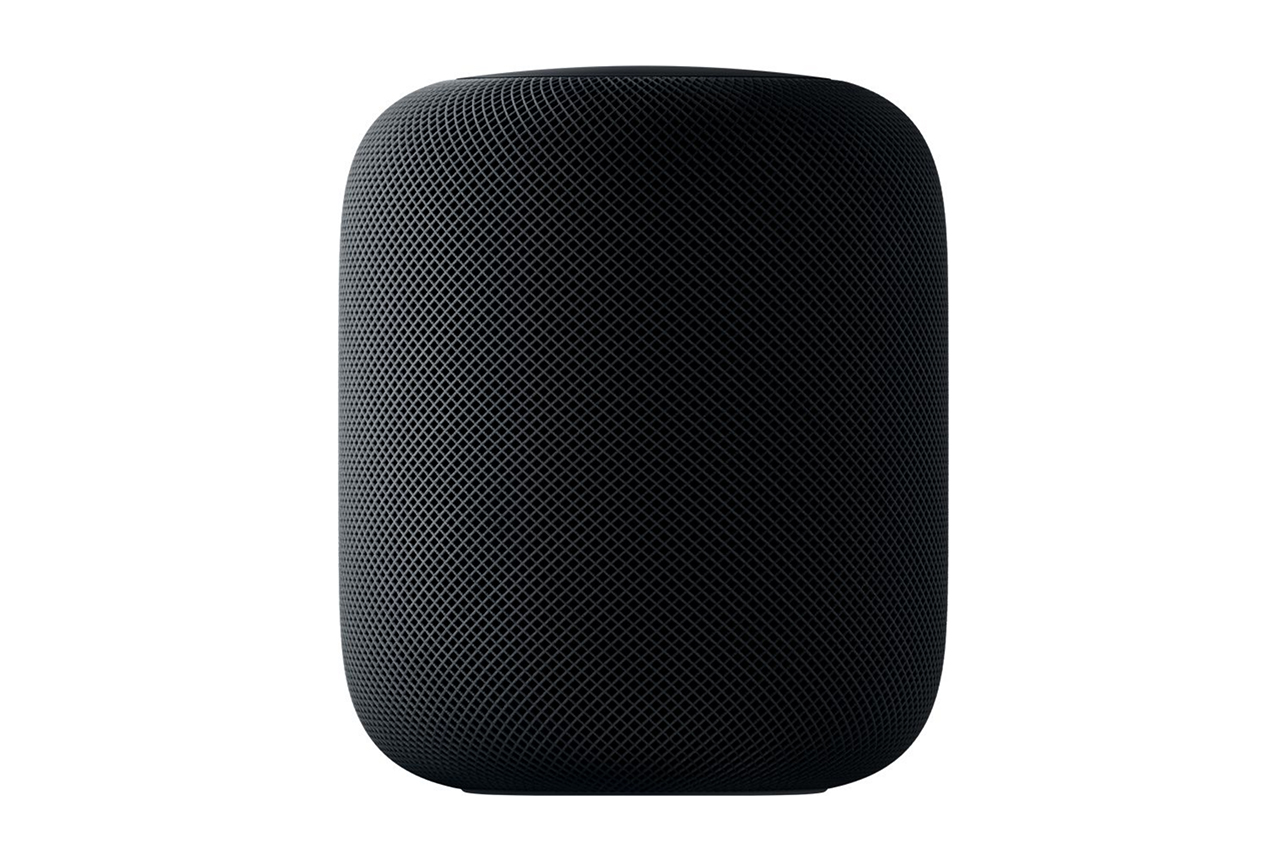 Apple HomePod
Apple HomePod


With a global score of 113, Apple’s smart speaker secures a mid-pack position in our brand new Wireless Speaker ranking. The HomePod’s strengths are undeniably its ability to adapt to difficult acoustic conditions and to project sound at 360°; its clear treble; and its powerful punch at soft and nominal volumes.
Its main weakness is located on the low-end of the spectrum: very noticeable bass distortions and resonances not only affect tonal balance, but also dynamics and even spatial sub-attributes. The midrange frequencies are fairly inconsistent, most likely due to the absence of dedicated speakers. Although maximum volume is loud enough, it is not as loud as some of its competitors. Volume steps increase too rapidly, making the speaker rather unsuitable for listening in quiet environments.
And speaking of listening environments, our protocol shows that thanks to its self-correction algorithm, the HomePod is a well-suited speaker for a bathroom or a kitchen, but less so when it comes to a party environment (because of its strong spectral artifacts), relaxing at home, or listening to music/podcasts before going to sleep.
Sub-scores explained
The DXOMARK Speaker overall score of 113 for the HomePod is derived from the Playback scores and their respective sub-scores. In this section, we will take a closer look at these audio quality sub-scores and explain what they mean for the user, and we will show some comparison data from two of the HomePod’s principal competitors in the Advanced category, the Huawei Sound X and the Xiaomi XiaoAI Speaker HD.

Timbre
Apple HomePod
152
DXOMARK timbre tests measure how well a speaker reproduces sound across the audible tonal range and takes into account bass, midrange, treble, tonal balance, and volume dependency.
Despite the HomePod’s self-tuning ability, its tonal balance is significantly impaired by an excess of bass resonances. Depending on the audio content, the device delivers a rather inconsistent performance in the midrange frequencies. As a result, voices and typical midrange instruments (violin, guitar, flute, and many others) are not faithfully reproduced.
On the other hand, treble is clear and enjoys a good high-end extension. Furthermore, the HomePod’s ability to adapt the frequency response to the room specifications allows it to perform particularly well in difficult acoustic environments, such as bathrooms and kitchens.

Dynamics
Apple HomePod
137
Our dynamics tests measure how well a device reproduces the energy level of a sound source, taking into account attack, bass precision, and punch.
The HomePod delivers an average dynamics performance, with powerful punch at nominal and soft volumes, and a decent attack across almost all genres (pop, C-pop, Latin, jazz, and movies).
Classical music suffers from the previously mentioned bass resonances, which mask the precision of certain instruments (for example, piano and strings). As a result, those same resonances impair bass precision at almost every listening level. Movies, however, are spared, and have excellent bass precision. At loud levels, punch is slightly lacking.

Spatial
Apple HomePod
111
Our Spatial tests measure a speaker’s ability to reproduce stereo sound in all directions, taking into account localizability, balance, wideness, distance, and directivity. (Please note that wideness is 0 on mono speakers and on speakers that cannot deliver a significant stereo effect.)
Because the seven tweeters are positioned all around the speaker, the directivity performance (or more precisely, the omnidirectivity) is excellent. As shown in the graph below, the overall sound remains consistent regardless of the listening angle, which is logical (and practical!), considering that the speaker is a cylinder with no indication of front or back except for the power cord. This makes the HomePod particularly well-suited for outdoor use, for example.
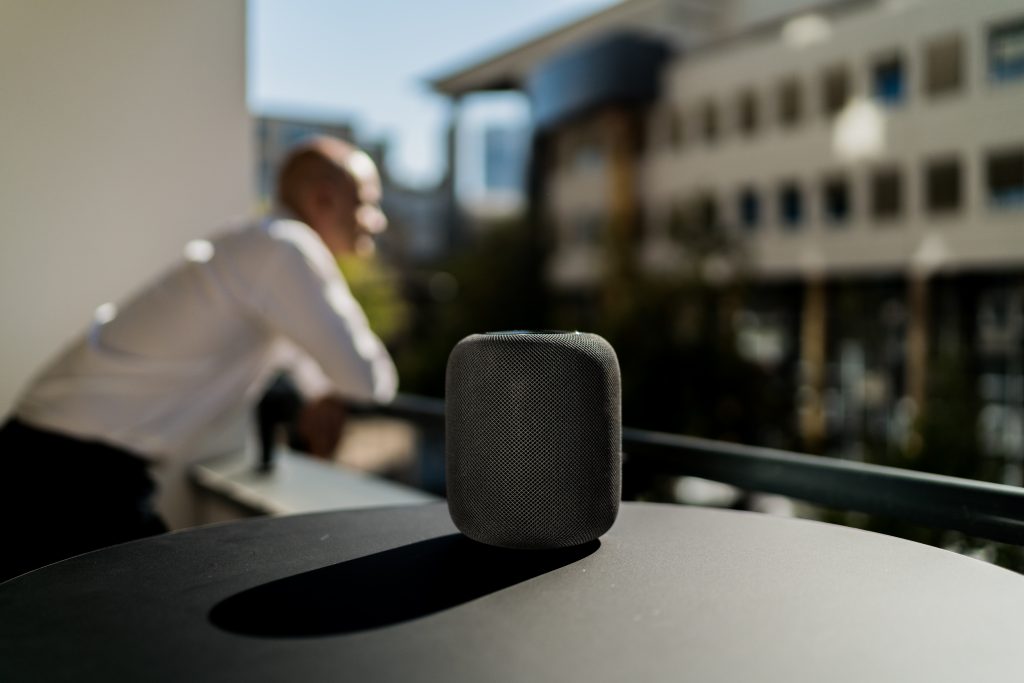
If you place the HomePod in a corner, it will automatically reduce the sound waves (especially bass frequencies) aimed at the wall and focus on the other directions. Placing the speaker in the center of a room is perfect for “filling it with sound,” which most likely will be fairly consistent across the room.
This 360° firing capacity must be distinguished from the wideness, however. The sound being (more or less) identical all around the speaker, it cannot be stereo: therefore, there is no soundstage wideness. Distance rendering is also weaker, as voices tend to be buried under the bass resonances, and often seem to come from the back of the speaker. While this sub-attribute is particularly poor when listening to podcasts, it reaches average performance when watching a movie. That all said, the HomePod delivers a very good balance, with well-centered voices.
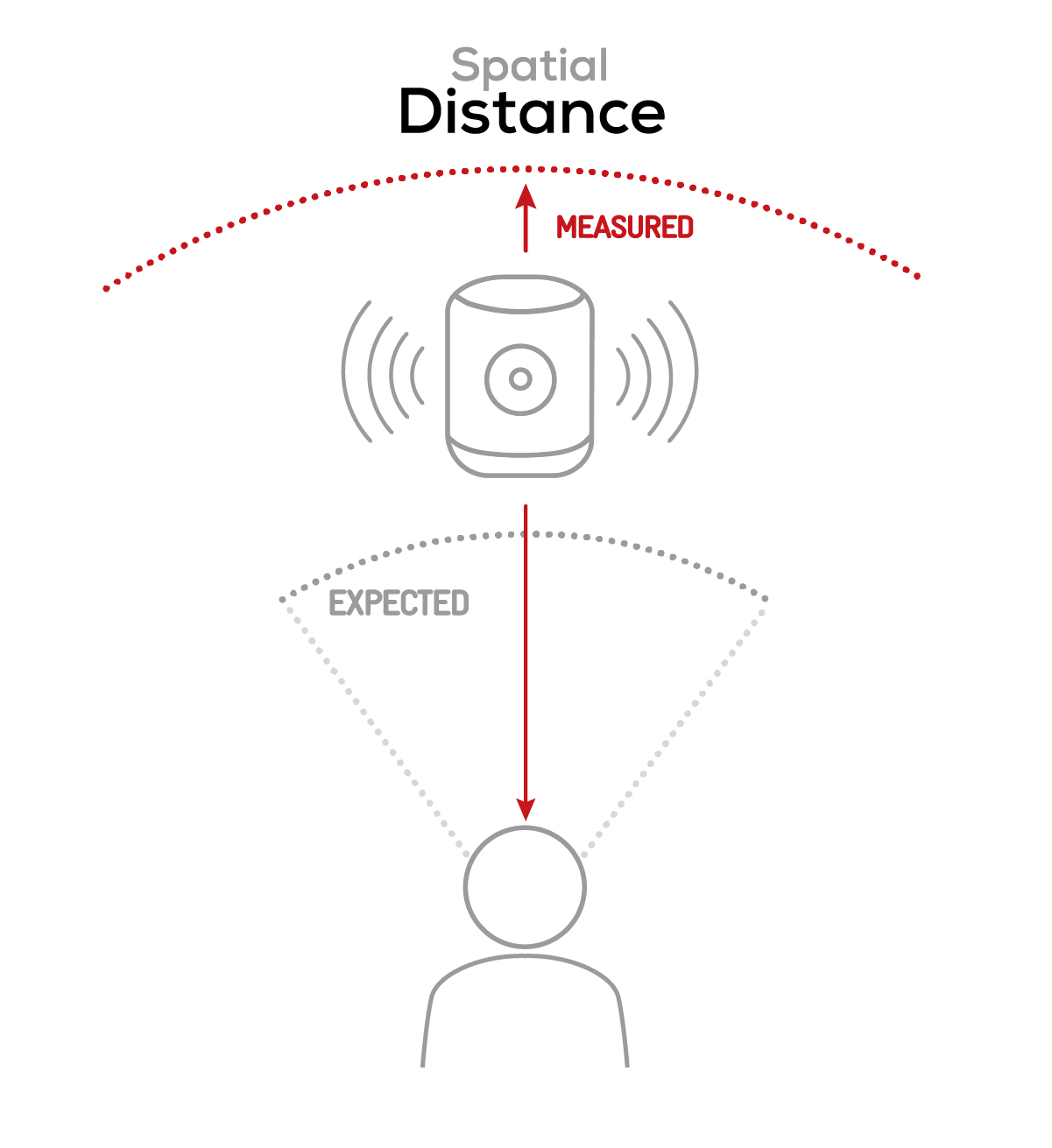
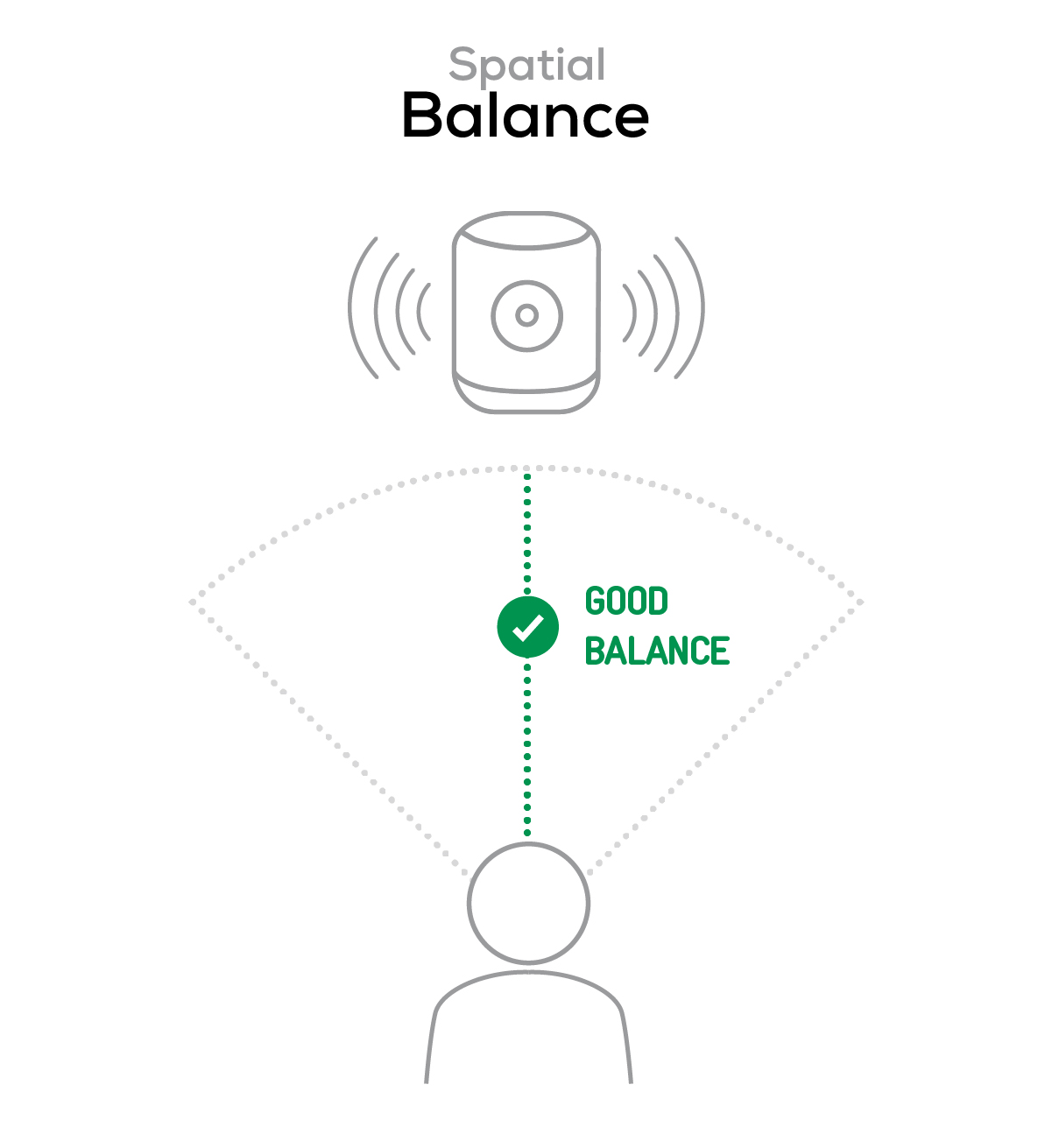

Volume
Apple HomePod
141
Our volume tests measure both the maximum loudness a speaker is able to produce and how smoothly volume increases and decreases based on user input.
As shown in the graph below, the volume curve is not linear at soft levels, which of course slightly impairs the volume consistency sub-score. Volume steps do indeed increase a little too rapidly instead of allowing the user to finely adjust the listening level as appropriate for a quiet use case such as bedtime, or while relaxing at home.
While the HomePod’s maximum volume is good, it is still well below its competitors. Here are a few sound pressure levels (SPL) we measured when playing our sample recordings of hip-hop and classical music at maximum volume:
| Correlated Pink Noise | Uncorrelated Pink Noise | Hip-Hop | Classical | Latin | Asian Pop | |
| Apple HomePod | 78.3 dBA | 76 dBA | 77.4 dBA | 69.6 dBA | 79 dBA | 71.5 dBA |
| Huawei Sound X | 83.7 dBA | 82.1 dBA | 81.6 dBA | 76.4 dBA | 82.8 dBA | 75.6 dBA |
| Xiaomi Mi Smart Speaker HD | 75.5 dBA | 72.6 dBA | 74.1 dBA | 65.6 dBA | 75.3 dBA | 68.9 dBA |
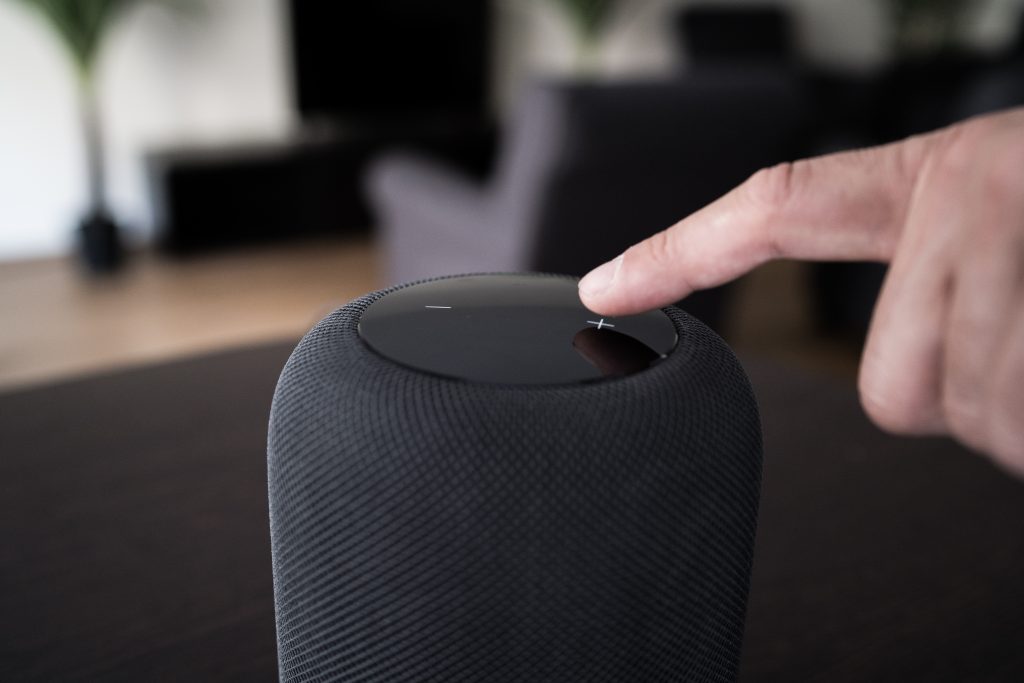

Artifacts
Apple HomePod
133
Our artifacts tests measure how much source audio is distorted when played back, along with such other sound artifacts as noise, pumping effects, and clipping. Distortion and other artifacts can occur both because of sound processing and because of the quality of the speakers.
Unfortunately, bass distortion not only occurs when pushing the drivers to their limits, but even at quieter volumes. This explains why, despite the consistent 360° playback and the favorable maximum volume, the HomePod performs poorly in our party use case. That said, there are no noticeable temporal artifacts such as heavy compression or aggressive limiting. That means the A8’s “dynamic processing” is rather subtle, and seemingly well adjusted.
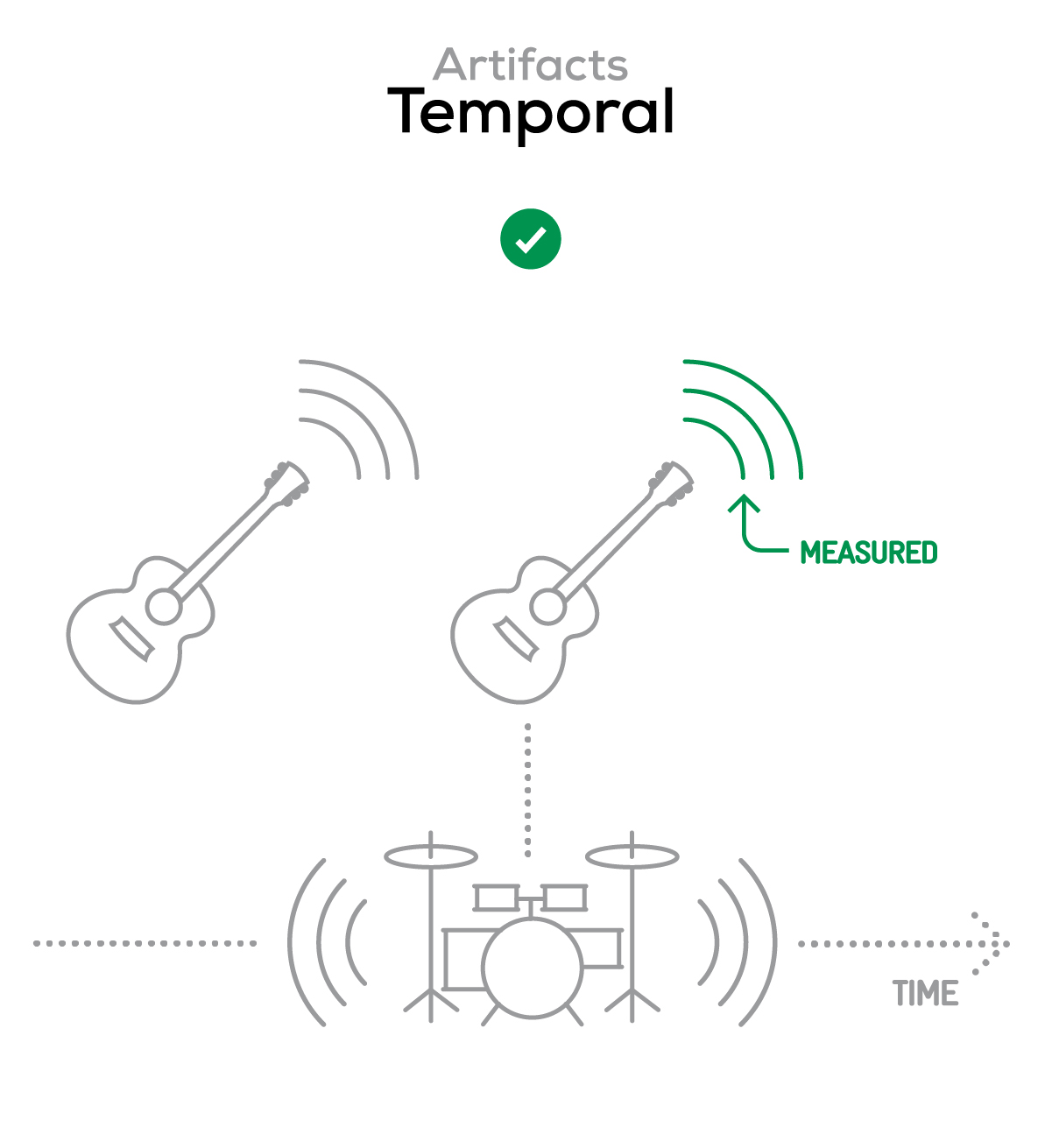
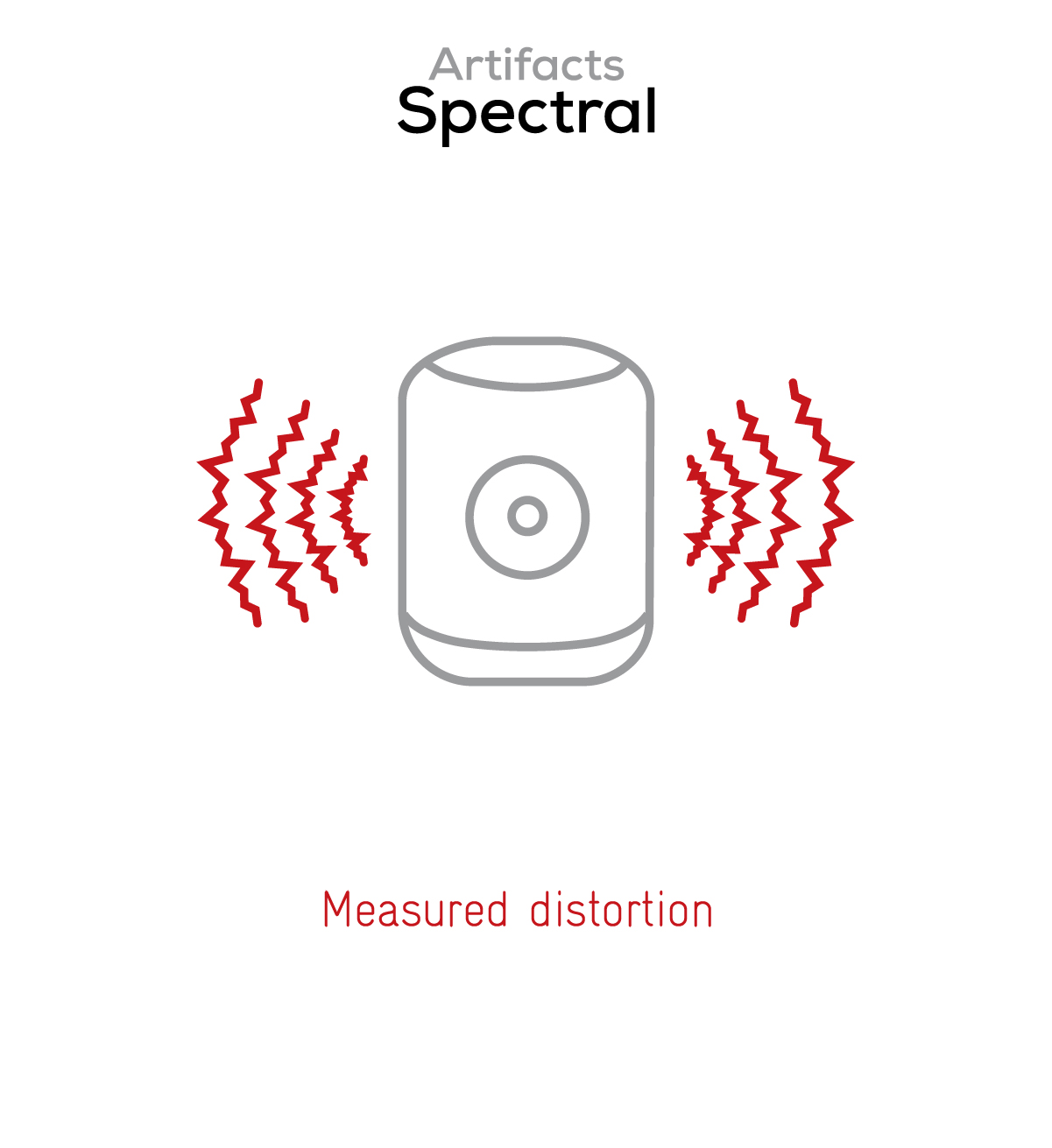
It might be useful to know that playing strong bass content (such as electronic or hip-hop tracks) can induce quite a lot of mechanical vibrations depending on the surface on which the HomePod is positioned, which in turn augments the low-end resonances phenomenon. It’s also worth noting that the latency induced by AirPlay 2 is unnoticeable.
Conclusion
The HomePod’s global score reaches the average mark in our Speaker database, mainly because of noticeable bass distortions and resonances occurring from quiet to loud volumes. Timbre, dynamics, artifacts, and even spatial sub-scores are all affected one way or another by these spectral artifacts, which disqualify it as a reliable party companion. Because its low volume steps increase much too rapidly, the HomePod wouldn’t be the best choice if you were planning to use your speaker mostly for listening to music or podcasts in a quiet environment or before going to sleep. But its ability to overcome difficult acoustics, thanks to its efficient auto-calibration feature, makes it particularly well-suited for typical bathroom or kitchen use, and its 360° sound projection comes in handy when listening to music outdoors.
Pros
- The tweeters deliver good high-end extension and clear treble.
- At soft and nominal volumes, punch reproduction is fairly powerful.
- Sound is evenly distributed at 360° around the speaker.
- Efficient automatic room calibration feature, which allows the speaker to perform well under difficult acoustic conditions such as bathrooms and kitchens.
Cons
- Disturbing bass distortion occurs from quiet to loud volumes, affecting most sub-scores, especially bass precision.
- Voices and typical midrange instruments (violin, guitar, flute, and many others) are not faithfully reproduced, due to inconsistent midrange frequencies.
- Punch is less impactful at loud playback levels.
- Distance rendering is impaired by the impression that vocal content often seems to come from the back of the device.


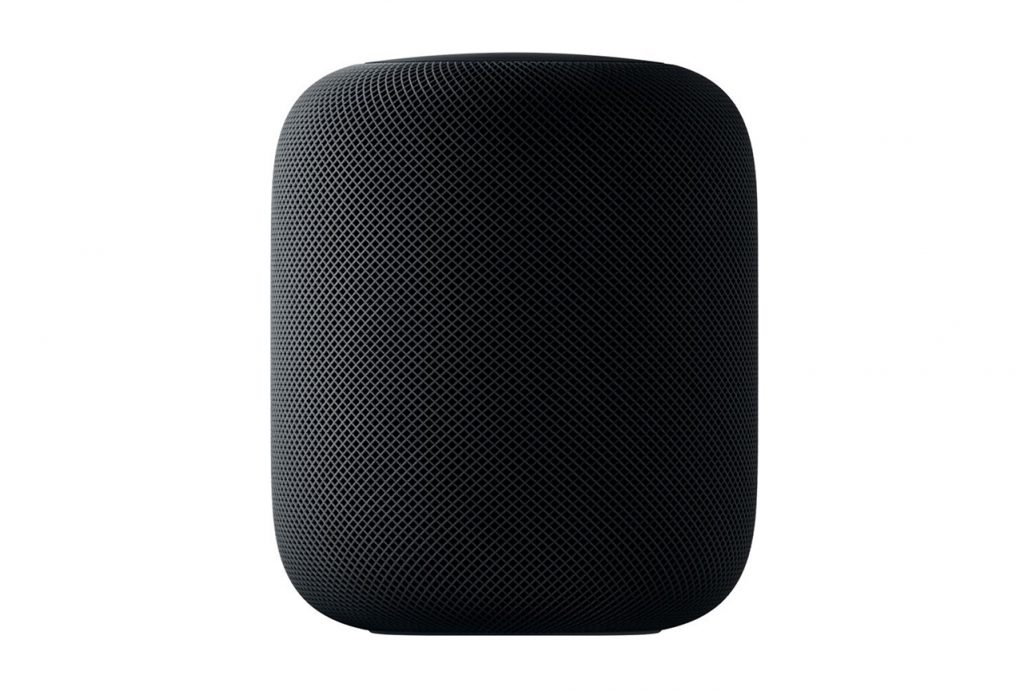
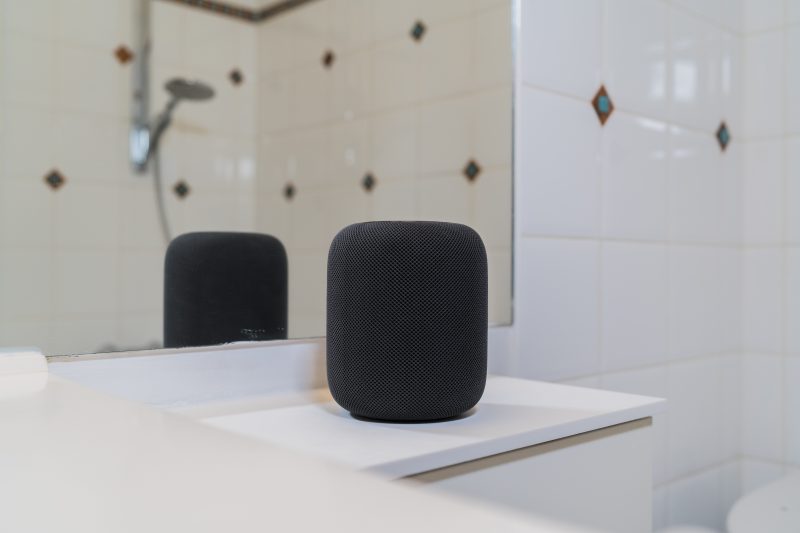
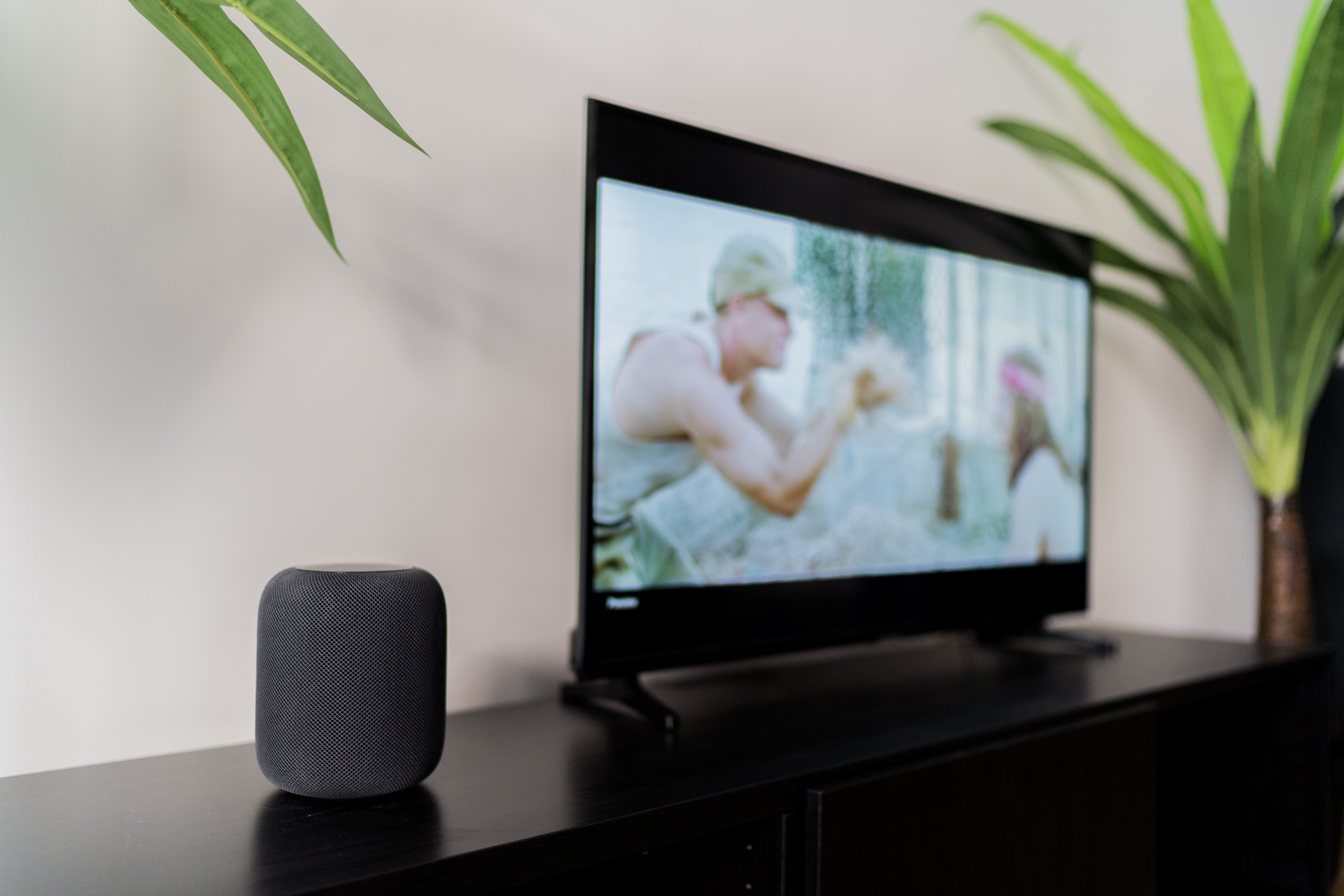
DXOMARK encourages its readers to share comments on the articles. To read or post comments, Disqus cookies are required. Change your Cookies Preferences and read more about our Comment Policy.